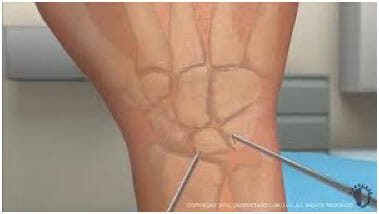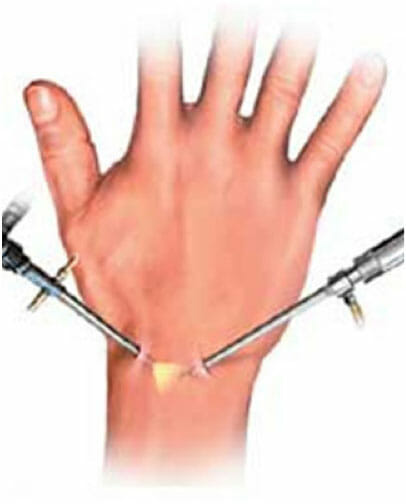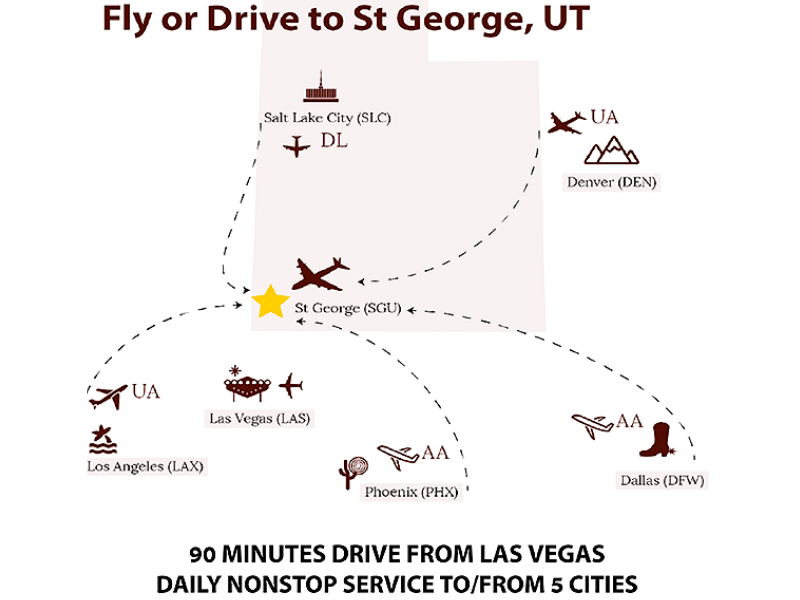Wrist Arthroscopy
Wrist Arthroscopy
Wrist arthroscopy is a surgery that allows a doctor to see the inside of a joint. It is performed after a patient sustains an injury such as a fall or a twisting of the wrist and is experiencing pain, clicks, or swelling. These symptoms may mean there is an internal problem with the wrist. Arthroscopy is often the best way of directly looking at the injury and repairing it. The procedure can be used to help align fractures of the wrist, remove some ganglions of the wrist, wash out infection, or remove excess joint lining associated with inflammation from conditions like rheumatoid arthritis.
Preparation for Wrist Arthroscopy
Your health care provider will talk to you about how to prepare for surgery. He may tell you not to eat or drink anything after midnight on the day of your surgery. He will tell you what medications to take or not take on the day of your surgery before surgery; you will need to obtain clearance from your regular doctor if you have medical problems. You may be required to obtain some basic tests for screening before the surgery. Basic blood tests, a chest x-ray, and an EKG may be required depending on your health.

FAQS
Frequently asked questions about surgical procedures
Can I use my insurance and get these prices?
Payment is due 14 calendar days prior to your surgery date. If, after the cutoff, your account is not settled, your case must be postponed.
How quickly can I have surgery?
How will I meet my surgeon?
If I had a car or work accident, would you work with my employer or attorney for payment?
What if I get sick right before my surgery?
You could develop a respiratory infection, a urinary tract infection, COVID, or some other condition that may necessitate postponement. There is no penalty when this happens.
What’s Included:
- Facility fee
- Graft and hardware costs (if needed)
- Surgeon and assistant surgeon fees
- Anesthesiologist
- Time in the recovery unit (at no additional charge)
- Initial consultation visit
- One post-operative visit
*Please note: If you choose not to proceed with surgery after the initial consultation, or if you delay your procedure for more than 6 weeks, you will need to update your consultation at a cost of $375.
What’s not included:
- Lab testing before and after the surgery, as needed
- Electrocardiogram (EKG), depending on age. If you had one elsewhere in the past 6 months and it read “normal”, we can forego this expense.
- Imaging costs. X-rays and MRIs can be obtained anywhere.
- Physical therapy services
- Medications you’ll need (oral or IV antibiotic infusions if an infection arises)
- Wound care
- Bracing supplies
- Additional doctor visits (a pre-operative visit with the surgeon, in person, and any required post-op follow-ups after the suture removal to monitor your progress
- Additional surgical intervention if a complication arises
- Additional imaging or hospital care if a blood clot develops
Surgical Procedure
During the procedure, a small camera fixed to the end of a narrow tube is placed through a small cut in the skin directly into the back of the wrist joint. The image is projected onto a television screen for better viewing. Several small cuts are used to allow the surgeon to place the camera in a number of positions to see the cartilage of each bone, the ligaments, and the joint lining called synovium.

What to expect after your surgery
Recovery
After your surgery, you will be placed in a bandage that may prevent wrist motion. This will protect the area and provide pain relief. Arthroscopy most likely does not require an overnight hospital stay. Fingers should move freely, and finger movement is often encouraged to limit swelling and stiffness. Your surgeon will provide instructions on caring for your wound, therapy, safe activities, and any work or exercise restrictions. Elevating the wrist is important to prevent swelling and pain after surgery.
Risks
As with any surgical procedure, complications can occur. Some possible complications may include, but are not limited to, the following:
- Infection
- Damage to nerves, tendons, or cartilage
- Stiffness or loss of joint motion
- Stiffness can be addressed post-surgery with rehabilitation.
Can I Travel to St George for Surgery?
Yes, and we’ll help you make all your arrangements.
- We have arrangements to try to obtain free flights through a non-profit volunteer pilot organization. We can do this with 10 days’ advance notice in most cases.
- We have discount codes for the Holiday Inn in town. This hotel is 1.5 miles from the surgery center and 2 miles from our clinic.
- We’ll arrange to send your after-surgery medications to your hometown pharmacy for pickup before you leave.
What if I would rather drive to St George?
No problem, we can help with those plans as well. When you have surgery with us, we’ll need to make sure you’re safe and comfortable after surgery. We’ll arrange cold compression therapy that requires an AC/DC adaptor/transformer and frequent stops to stretch and refill the ice reservoir on the road.
We’ll ask about the vehicle you’ll travel in to ensure you have a way to elevate and stretch out in the vehicle on the road while someone else does the driving.

How are follow-up and initial consultations handled?
In-person and telehealth consultations are possible with the surgeon to whom your case is assigned. The initial visit is included in the surgical package and is valued at $375.
We can also obtain the flights from the volunteer pilot nonprofit if you’d like to come for initial and follow-up visits in person. One follow-up visit is included in the surgical package at a value of $175. Any additional visits are charged at the time of service to your credit or debit card.
Transparent Pricing Guide
Find out the exact cost of your procedure in seconds, with no hidden fees, no surprises, and complete transparency every step of the way.
